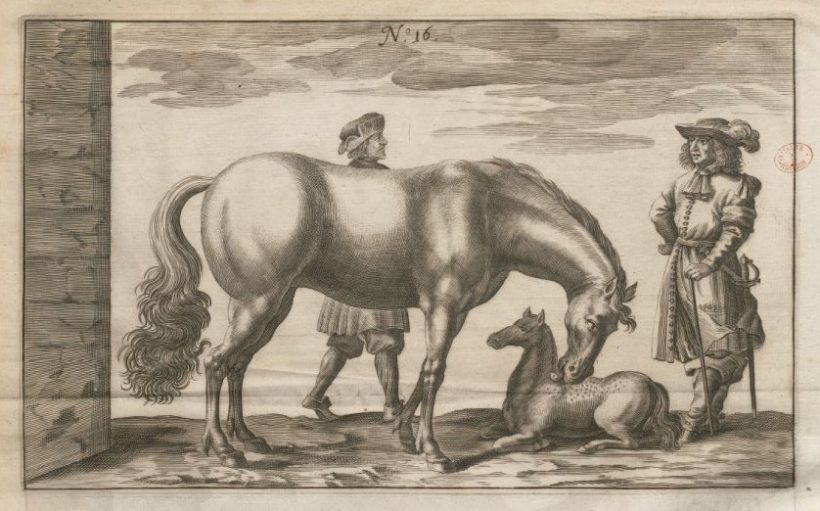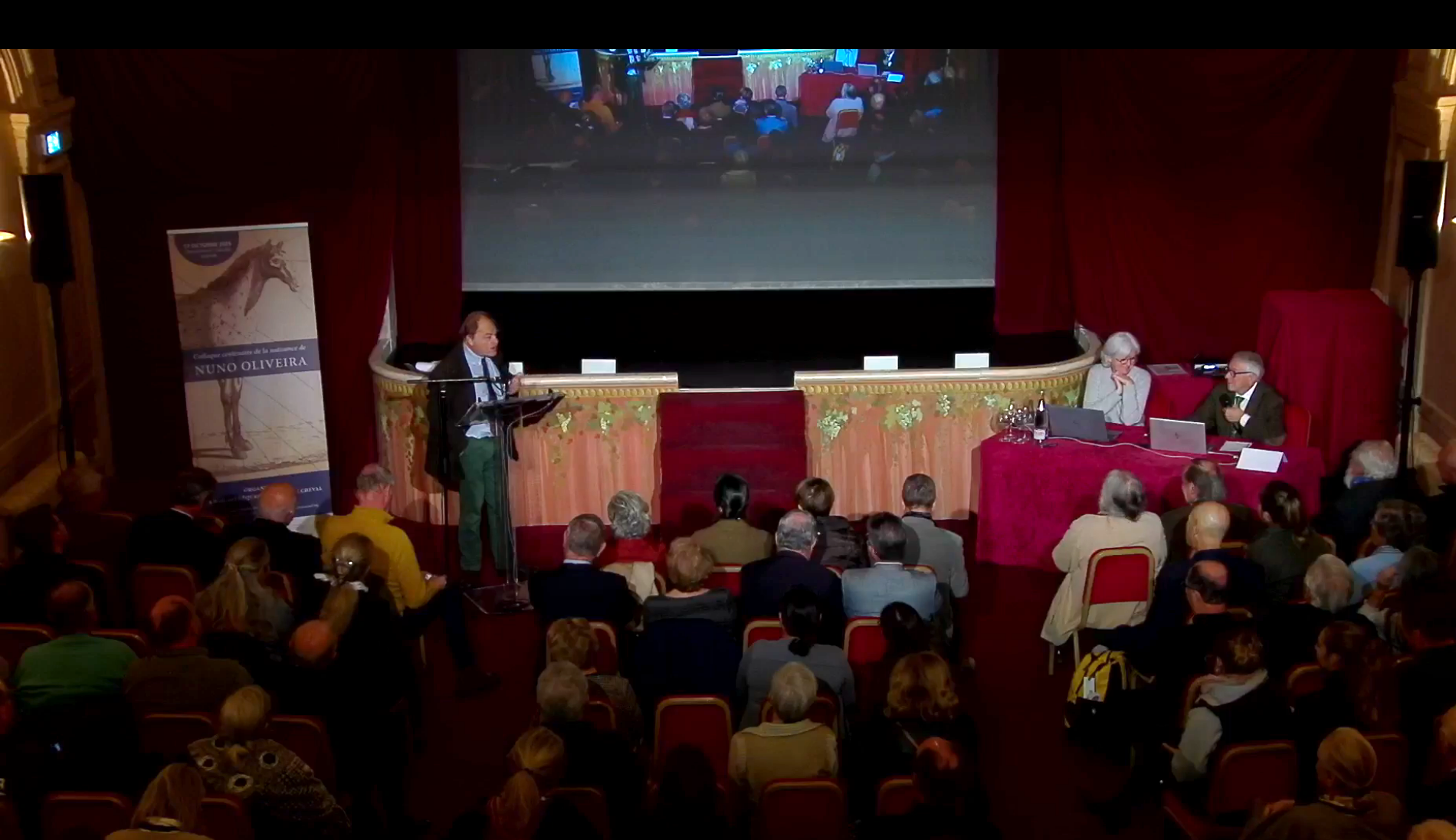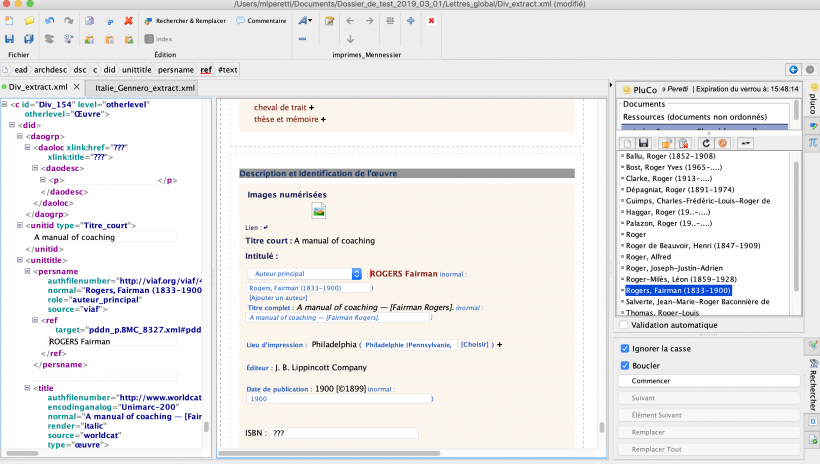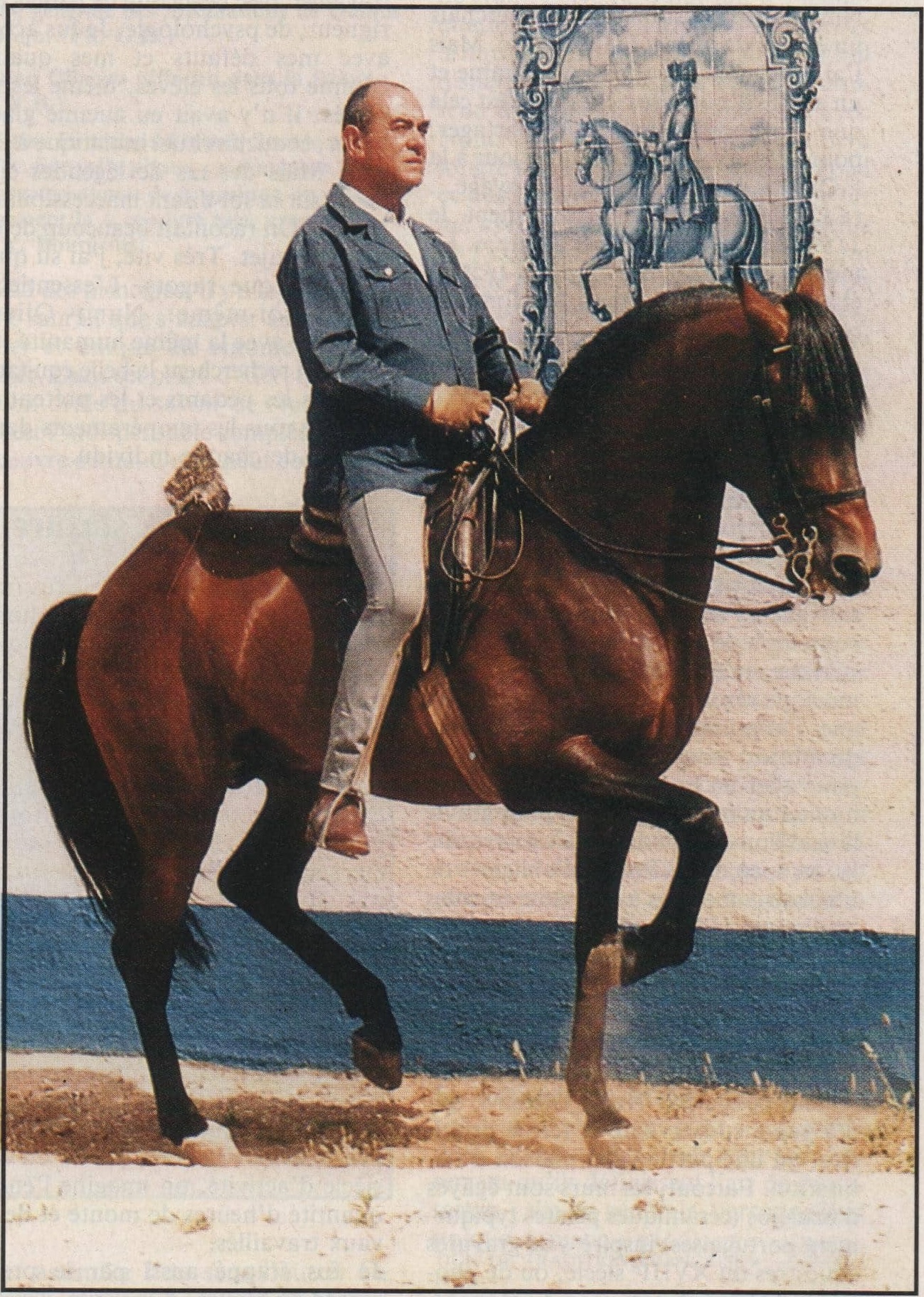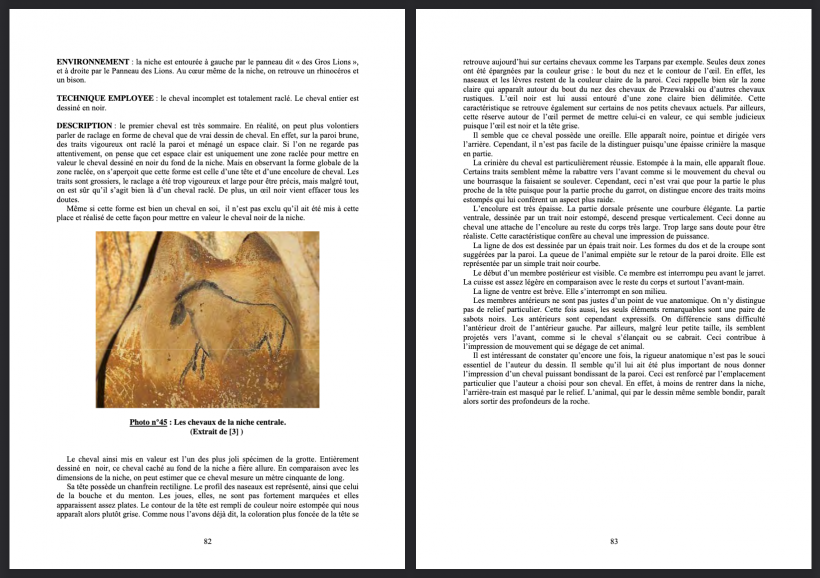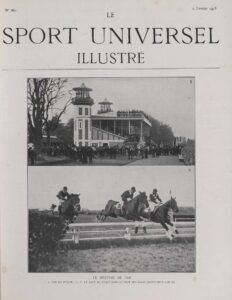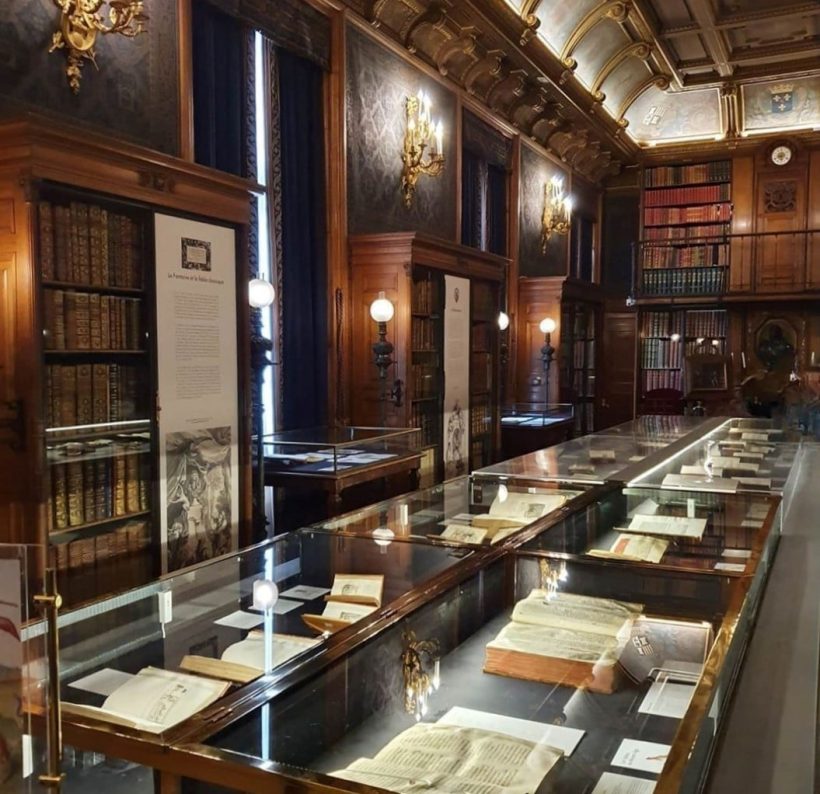
At the heart of the Condé Museum's Cabinet des Livres with Marie Pierre Dion
One cannot enter the “Cabinet des Livres” set up by the Duke of Aumale (1822-1897) in the “little castle” of Chantilly, also known as the Condé Museum, without feeling a strong emotion, a real shock. If that's what the man who has often been known to book enthusiasts as the “Prince of Bibliophiles” wanted about a century and a half ago, it's still relevant today.
A chapel atmosphere, a silent place for contemplation that Marie Pierre Dion, curator of the museum, dissipates by her words during the presentation she makes during the visit, and also in the following lines, where she insists on reminding everyone about the will of its designer, the same held today by the Institut de France which is in charge of it, to remain open to as many people as possible (more than 300,000 visitors in 2019), with all due respect of the intimate atmosphere of the place, in order to fulfil its destiny: that of transmitting memory and knowledge.
Would this Cabinet des Livres then become a library like any other? Certainly, if we stick to the contents: 1500 manuscripts, 17,500 rare and precious bibliographic units (including 700 incunabula), 30,000 old documentary or historical works (before 1900) and thousands more kept in drawers (archives).
And what about the horse in all this? Marie Pierre Dion does not hide the fact that, although of great quality and conservation, it is not as visible, important or precious as one might imagine a priori since it is located in Chantilly, still known as the “Capital of the Horse”, but on the other hand it is omnipresent, in filigree throughout the shelves and wall displays.
And that's unique! “ The horse is everywhere, in the illuminations and margins of manuscripts, in the engravings of the first printed chivalric novels, in history books and battle stories, in party books, in treatises on natural history or housekeeping...”
A visit is therefore a must.
Tell us about the Cabinet des Livres of the Château de Chantilly.
The Cabinet des Livres of the Château de Chantilly is reputed to be one of the most beautiful libraries in the world. 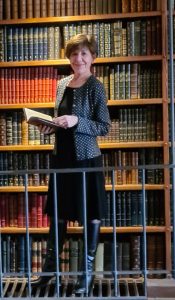
It is located in the heart of a castle of medieval origin, enlarged and refurbished by the Dukes of Montmorency in the 16th century and then by the Princes of Bourbon-Condé under the Ancien Régime et la Restauration, before being inherited by Henri d'Orléans, Duke of Aumale, in 1830.
It was the Duke of Aumale, often described as the “Prince of Bibliophiles”, who built the Cabinet des Livres in 1876. It houses the exceptional legacy of manuscripts handed by the Bourbon-Condé family as well as the extremely rare bibliophile collection that he himself assembled from 1850 onwards. The Cabinet des Livres is both a precious reserve and a space of discovery that welcomes all visitors.
Behind its appearance as a jewel case of precious wood, it is a modern library that uses the most recent iron technologies of the time. It has been so remarkably integrated into the structure of the Petit Château built during the Renaissance, that it seems to have always been part of it. The comfort of the reader and the security of the collections are thought out down to the smallest detail, which increases the power of fascination of this library, often described as a “paradise for bibliophiles”.
And about its location in the castle?
The Cabinet des Livres is a major element of the Condé Museum, another name for the castle, as the Duke of Aumale wanted to pay tribute to his predecessors there.
Part of the Cabinet des livres is located on the exact site of the bedroom of the Grand Condé (1621-1686), the victor of Rocroi. The special tribute to the prince in paid there, where the bust of him, sculpted by Antoine Coysevox (1640-1720), is placed on the mantelpiece. The vault is decorated with the coats of arms of the comrades-in-arms with whom the Grand Condé fought his main battles. The Duke of Aumale was also fascinated by the history of this great soldier whose history he wrote.
The Cabinet des livres, which preserves the rare and precious books of the Duke of Aumale, is not the only space devoted to books and writings in the castle. A reading room welcomes researchers. The most distinguished manuscripts belong in a vault. The Painting Gallery houses the art books. The so-called theatre library houses the works of the Duke of Aumale. The archives have their own dedicated rooms.
The growth of contemporary documentary and bibliophilic collections has finally led to the investment of other storage spaces, modern documentation is now in the former “Charters Tower” and contemporary bibliophilia is in the former “linen room”.
From its history to today?
Henri d'Orléans, Duke of Aumale (1822-1897), fifth son of King Louis-Philippe, brilliant soldier then politician, historian, member of the Institut de France, died without a direct heir.
In 1886, he donated the Chantilly estate and all its collections to the Institut de France to preserve its integrity and to guarantee public access.
What about its “contains”? First of all, this remarkable room, what makes it so appealing?
Most of what is offered to the visitor is made up not of the decorations of the room, but of the bibliophilic collections themselves. The mezzanine is accessible by a staircase invisible from the room so as not to break the alignment of the books arranged by format. The Duke of Aumale himself arranged the magnificently bound books on the shelves, anxious to create a harmony of colours and gilded decorations.
The studious, comfortable and warm atmosphere is both like an English club and you can't help but think of the Nautilus as well...
Its rarity?
There was hardly an equivalent in France of the Cabinet des Livres when it was built by the architect Honoré Daumet in 1876-1877. Its historicist décor has undergone few transformations. Gas lighting, for instance, was replaced by electricity. The Cabinet des Livres de Chantilly thus represents in its architecture, decoration and furniture an intact historical testimony. It is also a unique example in France of a conservatory of a former princely library since all the great noble libraries were subject to confiscations during the French Revolution. Only the princes of Bourbon-Condé were able to recover some of their books. It was these books that made the Duke of Aumale a “bibliomaniac” as he called himself.
What about its maintenance?
The Cabinet des Livres is regularly dusted off by the maintenance teams, but it is one of the few areas of the castle that has not yet been restored, although it requires it. The passage of time and the influx of the public have indeed left visible traces and tarnished the brilliance of the space, the lighting needs to be improved, the exhibition showcases of the last century are ill-adapted. As part of the vast process of rehabilitation and revival of the Château de Chantilly, which began in 2005, the preliminary study for the restoration of the Cabinet des Livres is now well underway.
Can you visit it?
The Cabinet des Livres has been part of the visitors' circuit since the nineteenth century. The Duke of Aumale liked to show it to his guests. The transition from the private library to today's place open to all was made without any major upheaval. Flat display cases have been installed in the centre of the library. In 2000, the permanent exhibitions were replaced by temporary exhibitions, which now follow one another at a steady rate of three to four per year, to satisfy the curiosity of visitors.
How many visitors come in each year?
The Cabinet des Livres is one of the must-sees in the castle. It is perfectly located at the top of the main staircase and at the entrance to the Grands Apartments. Most visitors to the castle enter it, more than 300,000 per year, at least until 2019... The warm and hushed atmosphere that reigns surprises and seduces. Some visitors pass through the Cabinet des Livres quickly after photographing it because there is a lot to see in Chantilly and you shouldn't hang around if you only have one day. Many, however, linger to admire the gilded decorations of the spines of the bindings and to decipher the titles of the books. Others come especially for the exhibitions presented.
Are the heavy window hangings still closed?
The Duke of Aumale had selected bindings to present them from the front in 5 wall showcases. Severely sunbed, these bindings were put away at the end of the twentieth century and are now part of the restoration programmes to be carried out.
Until the space is equipped with a more modern light filtration system, drapes are the only means of protecting coloured leathers.
Generally speaking, what can books suffer from over the years?
Theft, mishandling, mould and insects, humidity, high hygrometric variations, brightness... all these factors are multiplied tenfold in Chantilly because of the influx of the public, the frequency of exhibitions, the proximity of the forest, the presence of moats, the reflection of light on the water... Attention to conservation must be permanent. We also have to be extremely vigilant in tidying up. A book that is not properly stored is a lost book. However, the spines of the books do not have a label so as not to damage the leathers, which complicates the search and checking.
And the contents of the Cabinet des Livres of the Dukes of Condé? What kind of books are we talking about?
The core of the Duke of Aumale's collection is made up of books that belonged to the princes of Bourbon-Condé. During the French Revolution, 800 manuscripts, several thousand archival registers and collections of correspondence were confiscated and in 1815 were returned to the last Duke of Bourbon who bequeathed them, along with his other possessions, to the Duke of Aumale. It was these books that gave the Duke of Aumale a taste for books and the desire to work as a historian. He completed this collection and put his personal stamp on the collection by adding more than 600 manuscripts and thousands of rare prints. The Duke of Aumale was unable to reconstitute the princely library of 80,000 volumes, most of which the French Revolution dispersed in public collections, but he devoted himself to writing the history of the princes of Condé and his personal bookplate took up the arms of the Condés.
The relationship between the Cabinet des Livres and the princes of Condé is thus expressed in terms of inheritance and homage.
How did the Cabinet des Livres come about?
How is it distributed?
The Duke of Aumale began collecting books himself around 1850, during his exile in England. From then on, his “Cabinet des Livres” was the result of an incessant activity of identification and acquisitions, particularly in the largest public sales of the nineteenth century. He bought several exceptional complete collections (the Standish Library in 1851 and the Armand Cigongne Collection in 1859), as well as smaller but rich and coherent collections, or exceptional isolated volumes such as the Très riches heures du duc de Berry , in 1856.
The Duke of Aumale showed a particular interest in the most precious, oldest and rarest books, in the French literary and artistic heritage and the history of France. Many of the specimens are unique or extremely rare. Most of them have remarkable particularities: copies of autographs, books enriched with engravings and drawings, prestigious origins...
The bindings are one of the particularities of the collection: the Duke of Aumale placed orders with the greatest craftsmen of his time (Trautz, Capé, Duru, etc.) and admitted in 1850: “I know that rare books are expensive; I know the pretty bindings are too; But I love both, and especially both things together, and I want to put the right price on them”.
Is it possible to consult the books?
The Duke of Aumale was a pioneer in terms of hospitality. He attracted or recruited the best specialists to study his collections, he welcomed scholars, and devised a  whole programme for the publication of catalogues and scholarly works. Today, readers are seated in the beautiful reading room overlooking the garden of La Volière .
whole programme for the publication of catalogues and scholarly works. Today, readers are seated in the beautiful reading room overlooking the garden of La Volière .
These readers are welcomed all year round 5 days a week, by reservation only because the capacity of the room is 12 readers total, and 4 in times of health crisis.
What is the horse's share in this collection?
A distinction must be made between the Cabinet des Livres on the one hand, the prince's working library on the other, and finally the archives. It is also necessary to distinguish between strictly equestrian literature and what belongs to a noble culture where the horse is omnipresent. In the Cabinet des Livres, the horse is everywhere, in the illuminations and margins of manuscripts, in the engravings of the first printed chivalric novels, in history books and battle stories, in party books, in treatises on natural history or housekeeping...
About twenty best-sellers of equestrian literature can be mentioned, in exceptional copies. Pluvinel's treatise, L'Instruction du Roy en l'exercice de monter à cheval , contains, for example, the engravings of the two editions of 1623 and 1625, engravings before and with the letter, and an autograph letter from Pluvinel. The Duke of Newcastle's Method and New Invention of Training Horses , in the second edition (1658), has very large margins that magnify the engravings.
Also worth mentioning is the album produced by Charles Perrault and Israël Sylvestre to commemorate the carousel and equestrian games organized by Louis XIV in the 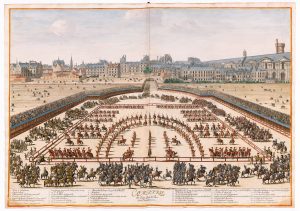 Cour des Tuileries on June 5 and 6, 1662. The Duke of Aumale acquired one of the five coloured specimens, the one that belonged to the Prince de Condé magnificently represented at the head of the Turkish quadrille.
Cour des Tuileries on June 5 and 6, 1662. The Duke of Aumale acquired one of the five coloured specimens, the one that belonged to the Prince de Condé magnificently represented at the head of the Turkish quadrille.
Among the manuscripts, two versions of the Hipposteology should be mentioned, i.e. the Discourse on the Bones of the Horse by Jean Héroard, who began his career as a horse veterinarian of Charles IX. The Duke of Aumale inherited the Héroard manuscript from the Bourbon-Condé family (manuscript 338) and acquired the copy presented to King Henry III in 1579 (manuscript 337). The comparison makes it possible to appreciate and compare the original montage with the author's drawings, and the presentation copy. The Cantilian manuscripts appear to be the oldest known treatises on the equestrian skeleton. The author envisioned, but never completed, a complete work on the anatomy of the horse, in the wake of the extraordinary work of the Italian Ruini, published in 1599.
In the working library, the works devoted to horses follow the evolution of the Duke of Aumale's military career in the nineteenth century. The general gave a lot of thought to the organization of the cavalry regiments. Many contemporary authors dedicated their works to him, such as Louis Vallet, the author of Le Chic à cheval in 1891.
Finally, a third set of manuscripts, plans, correspondence, accounts and archives relating to the construction but also to the daily management and administration of the Great Stables of Chantilly, to the organisation of hunts and various movements of princes from the sixteenth to the nineteenth centuries, should be mentioned. All of this is very rich information for historians.
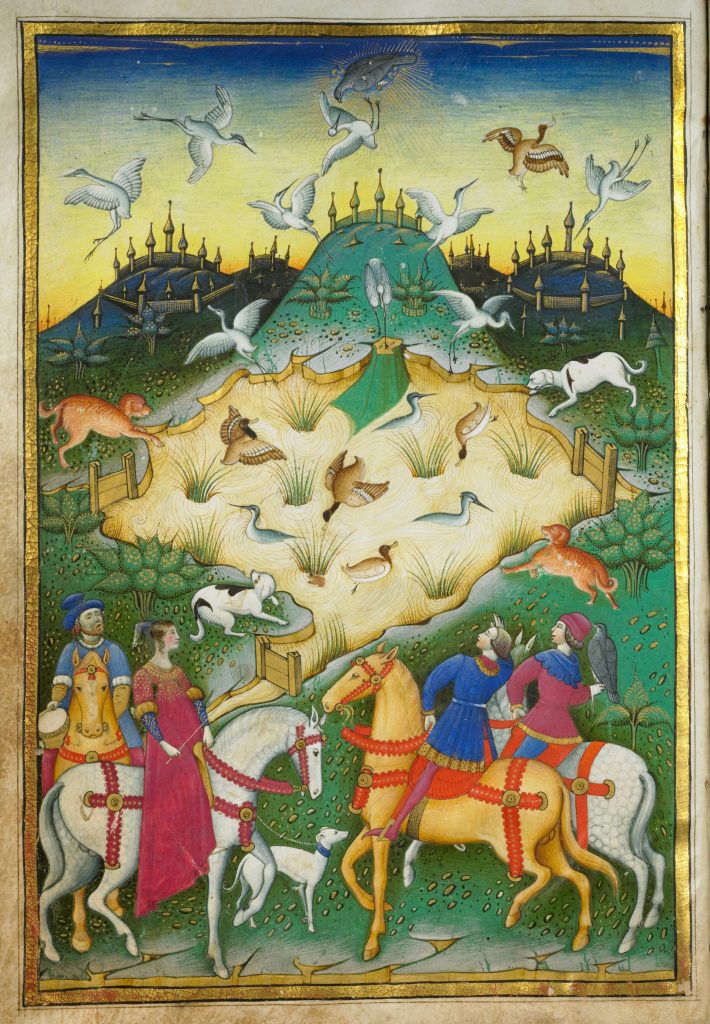
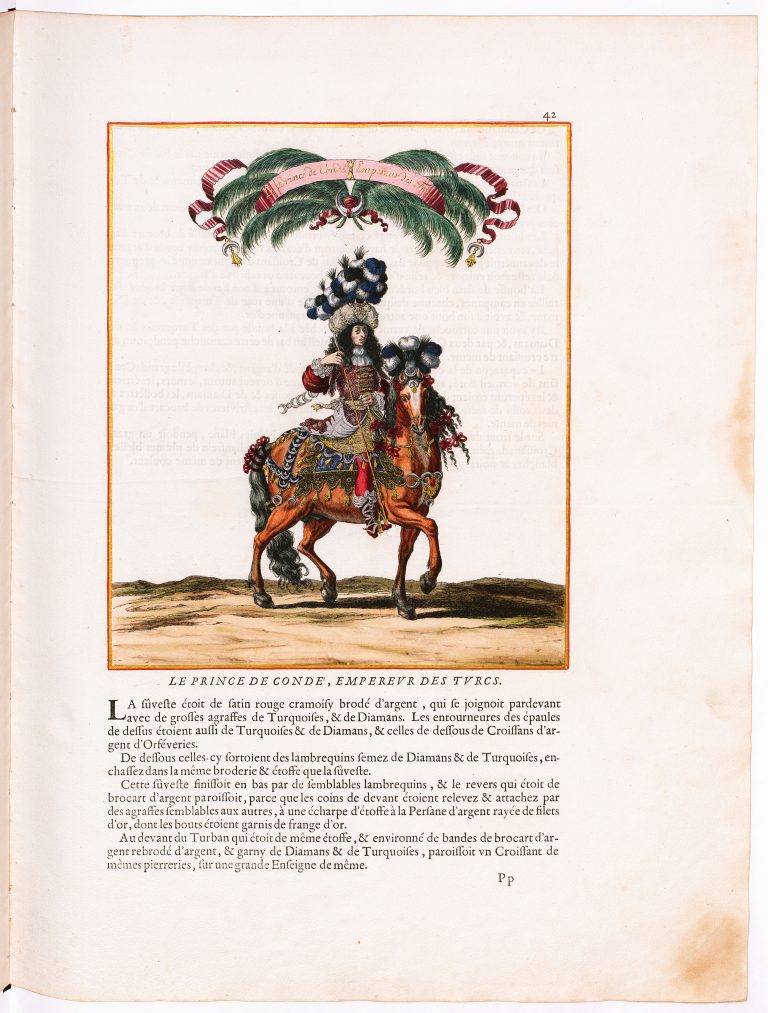
The share of manuscripts, books, theses, pamphlets, articles?
In terms of figures, if we take into account all the Cantilian collections, there are 1500 manuscripts, 17,500 rare and precious bibliographic units (including 700 incunabula) in the Cabinet des Livres, 30,000 old documentary or historical works (before 1900) in the theatre library and 300 titles of periodicals.
In the archives, 5000 boxes and registers, 80,000 letters, 8000 plans...
The contemporary collection includes 10,000 volumes, 700 theses and dissertations, and 1000 works on contemporary bibliophilia.
How much of it is digitized?
A tiny percentage, even if valuable partnerships have been established with the CNRS Institute for Research and History of Texts or research centres. Important 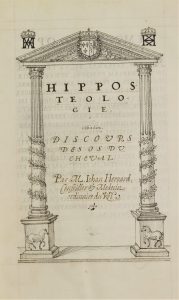 operations have been carried out on medieval and illuminated manuscripts, maps and plans, certain collections of correspondence, and rare printed matter. But much remains to be done.
operations have been carried out on medieval and illuminated manuscripts, maps and plans, certain collections of correspondence, and rare printed matter. But much remains to be done.
Today we digitize each year about twenty books, on average 3000 views, with the help of the Regional Cooperation Agency for Books and Reading of Hauts-de-France and the National Library of France. This year, for example, we will be putting online a manuscript entitled “Situation of the stables, sheds and venison of the Prince of Condé on July 1, 1772” with the names of all the horses and other equines and those of the grooms (manuscript 376).
Does the Institut de France still make acquisitions?
The historical and bibliophilic collection built up by the Duke of Aumale himself is not intended to grow, with a few exceptions. The major pieces that could enrich it are most often already kept in public collections. However, exceptional bequests enabled the Institute to acquire major pieces such as Anne de Montmorency's book of Hours in 1901.
On the other hand, we regularly enrich the archives and documentary collections to shed light on the personalities of the successive owners of the castle, the old collections and the history of the Domaine de Chantilly.
We also receive regular donations and deposits from bibliophile societies that breathe new life into the collections with contemporary creations and offer new opportunities for visitors to discover.
Apart from all, what are the rarities, the treasures of this Cabinet des Livres?
Of course, we must mention the manuscript that is one of the most famous in the world, the Très Riches Heures du duc de Berry. It is a prayer book for the use of the laity, commissioned at the beginning of the fifteenth century by Jean de Valois (1340-1416), Duke of Berry, from three young artists of Flemish origin, the brothers Paul, John and Hermann of Limburg. They died in 1416, the same year as the Duke of Berry, without the work being completed.
Throughout the fifteenth century, other painters followed one another to complete the manuscript, such as Barthélémy d'Eyck, around 1445, or Jean Colombe, on behalf of the Duke of Savoy, in 1485. In the end, it was a sumptuous “cathedral book”, a collective book produced thanks to a succession of artists and patrons, that the Duke of Aumale acquired in 1856. Thanks to the reproductions, the Très Riches Heures acquired immense fame and even shaped an ideal image of the Middle Ages in the collective imaginary.
Since the summer of 2020, a digital flip machine has been displaying all the pages of the manuscript in the Cabinet des Livres. In the calendar, the May cavalcade and its elegant riders is one of the most beautiful pages.
How does one day become Curator of the Libraries and Archives of the Domaine de Chantilly?
The Cantilien post reports to the libraries of the Institut de France where curators of the scientific staff of the State libraries (Ministry of Higher Education) may be assigned given the exceptional importance of the libraries owned by the Institute. I am fortunate to belong to this scientific body and to be a Chartist, conditions of access to the position. The Chantilly post has the particularity of being oriented towards research as much as towards the general public, for whom a visit to a magnificent estate is often an opportunity to discover manuscripts or precious books. The presentation of exhibitions must be adapted to a wide variety of audiences.
This position was only created in 2000, which means that there are a lot of delays to catch up on in terms of inventory, computer processing of the collections and restoration. That's all that can motivate an application, far from the life in a castle!
And for you, personally, which is the book, the piece or the document that you prefer or that amazes you?
The double door that gives access to the Cabinet des Livres is quite fascinating... On the Introductory Room next to the Princely State Apartments, a first door in oak wood finely carved with the cypher of Henri d'Orléans is followed, on the Cabinet des Livres side, by a double metal door. It is clad in a glazed cladding simulating a cupboard filled with books, the spines of which can be seen. Thus, when this second door closes on you in the Cabinet des Livres, it plays the role of a trompe-l'oeil giving the illusion of being absolutely surrounded by books and as if locked in the bibliophile's dream: the titles of the fake spine are indeed titles of works from Antiquity that have disappeared, in any case not rediscovered to this day...
Are you passionate about it?
More profoundly, what makes the collection fascinating is not this or that piece but the way in which the pieces are articulated with each other, showing the transmission of the texts to us. The Duke of Aumale collected the manuscript forms, the first printed versions, the reference editions at various times. This is what he calls “pairing” collections. The comparison between handwritten and printed layouts makes it possible to measure the importance of the printed revolution on the way in which texts are read and apprehended.
What bothers you?
Most of the books are in a remarkable state of preservation. The effect on the eye is very pleasing, but for the historian, it means that in some cases, the old bindings, damaged or too innocuous, have been replaced. Provenance marks or traces of old reading have been washed away by some of the great collectors of the nineteenth century. The Duke of Aumale fortunately broke with these practices along the way...
Do you personally have a taste for old books?
Yes, of course, otherwise I wouldn't have made a career out of it. The profoundly moving thing about ancient books is that they bring you closer to the authors who wrote them, that they have been carefully made by copyists or printers, that they have been leafed through by hundreds of hands before you, and that they have been preserved as treasures by many of their successive owners. If you ask them carefully, they reveal a whole intellectual, economic and social world.
Are you a collector? Are you a bibliophile or a bibliomaniac?
I am a collector, bibliophile and bibliomaniac by proxy when I watch over a collection such as that of the Duke of Aumale. I try to understand and convey the spirit of his collection so that researchers can make the most of it and enhance it.
On a personal level, I would rather define myself as an avid reader attached to the books that have marked my life or that inspire my work. I'm loyal to some authors but always curious about new writing.
Do you ride horses?
For as long as I can remember, ink or paper horses have made more of an impression on me than the few horseback rides I have made.
Later I discovered the horse in art and history. As a student at the Ecole Nationale des Chartes, I was fortunate enough to be able to explore the archives of a great princely family, that of the Princes of Croÿ, under the direction of Daniel Roche. He made me aware very early on of the importance of the equestrian civilization of yesteryear.
If not, what are your feelings about of horses?
A whole reverie around the energy, the strength, the elegance of the horse, or even this fusion of man and animal through the figure of the rider... I am fortunate enough to be able to admire on a daily basis, from my window, the complicity that unites the riders of the Great Stables of Chantilly and their horses.
In one of his books of hours published by Geoffrey Tory in 1527, the Duke of Aumale noted the strong impression made on him by an engraving depicting the black horse of death. I have multiple meditation themes here!
What do you think about The World Library of the Horse https://labibliothequemondialeducheval.org/ ?
It is a federation of sources and a mine of information that is an advantageous successor to all the great undertakings of ancient bibliography.
How could the latter be useful to the influence of the Cabinet des Livres du Château de Chantilly?
It is important to remember that the library of the Château de Chantilly is a public library, which welcomes students and researchers free of charge. All you have to do is make an appointment to be able to access the reading room in compliance with the health protocol put in place since May 2020.
A separate library like that of Chantilly, in the sense that it belongs to a museum, cannot shine without participating in the large national general reporting networks that are Calames for manuscripts and the Catalogue collectif de France for printed matter. Chantilly is also present in the BVMM (Virtual Library of Medieval Manuscripts of the IRHT-CNRS) or in Gallica.
Collections should be reported in specialized databases as much as possible to have an even better chance of being consulted. The World Horse Library is therefore a very valuable channel for Chantilly's collections.
Chantilly is the world capital of horses. The Great Stables or the racecourse must of course be documented and put into perspective in The World Horse Library. The library of the Château de Chantilly will be happy and proud to share its resources with the World Library of the Horse!
Interview by Xavier Libbrecht
For more information:
